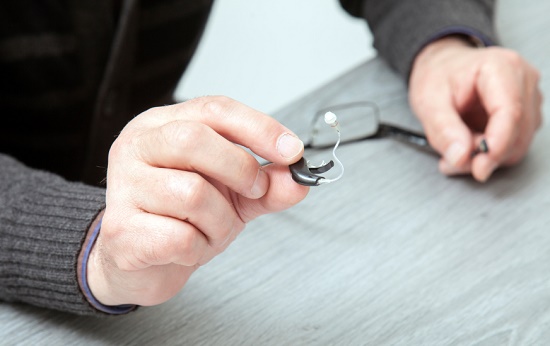
Murphy’s Law tells us that “if anything can go wrong, it will.” A better version might be that “things will go wrong in any given situation, if you give them a chance.”
That’s the reason we change the oil in our cars, replace the filters, and rotate the tires. We’re aiming to preserve our investment and extend its life.
You should consider hearing aids in a similar manner. If you give things an opportunity to go wrong, they will; but if you’re proactive in your care and maintenance, your hearing aids can persist and operate properly for many years.
So what are some of the things that can go wrong? Below are the three main threats to your hearing aids and what you can do to defend against them.
1. Physical breakdown
Enemy # 1 is physical destruction. Hearing aids contain fragile electronics that are susceptible to damage from shock. To defend against this, be sure you store your hearing aids in their storage cases whenever you’re not wearing them.
An effective rule of thumb is that your hearing aids should be either in your ears or in the storage case at all times. Leaving your hearing aids unprotected on any surface is just inviting Murphy’s Law to come and knock them off. Similarly, when you’re inserting or removing your hearing aids, it’s best to do this over a soft surface in the event they fall.
In addition, remember to check and replace the batteries frequently. You’re not doing the electronics any favors by having the hearing aids function on low battery power.
2. Moisture
Electronics and water do not mix, which anyone who’s dropped a mobile phone in the kitchen sink knows all too well. Once underwater, there’s little that can be done. But it requires much less than total submersion in water to damage your hearing aids.
Water, in the form of mist, can still work its way into the hearing aids and start wreaking chaos. For that reason, you should avoid using hairspray, bug spray, or any other sprays while using your hearing aids. In addition, keep in mind that radical changes in temperature can generate condensation, for example going from a climate-controlled room to the outdoors. If this happens, ensure that you dry off any moisture that develops.
We also highly recommend not keeping your hearing aids in the bathroom, as the condensation can create issues. This is another reason that your bedside table drawer is probably the best spot to store your hearing aids when they aren’t being used.
3. Earwax and dirt
Even if you’ve protected your hearing aids against physical damage and water with appropriate storage and the avoidance of moisture, you’ll still need to protect against enemy # 3: dirt and grime.
Earwax, dirt, and debris can accumulate on the hearing aids, clogging the speakers, ports, and other parts. To guard against this, 1) sustain proper ear hygiene, and 2) clean and sanitize your hearing aids every day.
Regarding cleaning and sanitizing your hearing aids, ensure that you use only the tools provided by your hearing professional. Your hearing professional can provide cleaning kits and directions exclusively for your type of hearing aids.
And finally, think about purchasing a hearing aid sanitizer. Sanitizers utilize ultraviolet light to comprehensively kill dangerous pathogens, all while supplying a safe place for storage.
